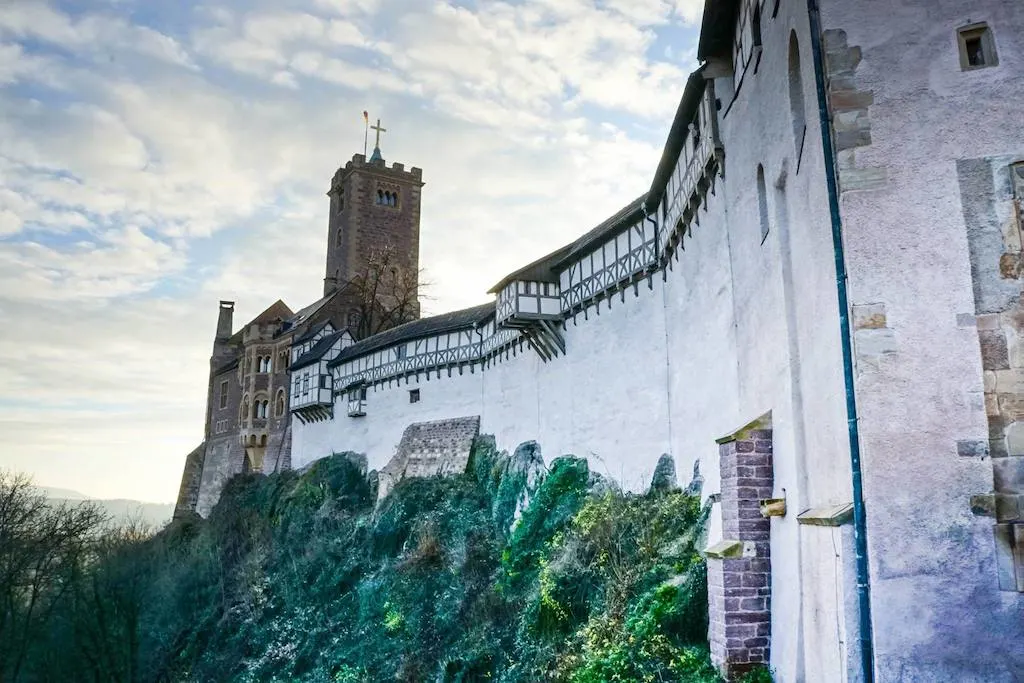Expert travel storyteller Jordan Adkins, founder of InspiredByMaps.com, brings a decade of adventures across 101 countries and 450+ UNESCO sites into rich, off-the-beaten-path narratives, melding ecological expertise with genuine, seasoned travel insights. His full bio can be found here.
Germany is one of the world’s most captivating travel destinations, a juxtapositioned mess of medieval and modern temptation from the history-soaked streets of Berlin and the urban jungle of Frankfurt to the fairytale-esque Hohenzollern Castle and the romantic Rhine Valley.
There is so much to see here, but discovering the most famous landmarks in Germany is an excellent place to start…
There is magical cities, historical highlights, inspiring stories, small towns, palaces, park, gardens, art and culture, museums, and plenty of traditions and customs. As you would expect of a country with over two millennia of history.
Amidst all this, it is easy to forget that this Western European nation is also exceptionally well-endowed with incredible natural landscapes of dense forests, extensive rivers, soaring mountain ranges, and the wind-swept North Sea beaches.
There is so much to places to visit in Germany; you could spend a lifetime explore its riches and only just scratch the surface. This is why we have developed this cheat sheet to help you with your travels.
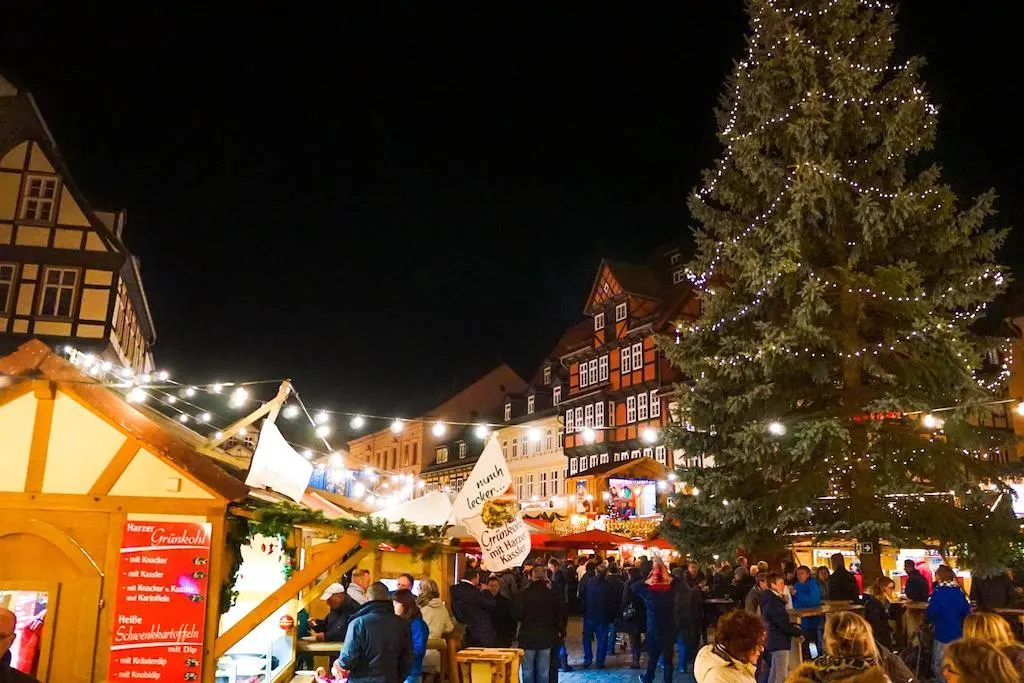
But first – what is a landmark?
A landmark is a recognizable natural or artificial feature that typically stands out from its environment and has become a local or national symbol. For modern tourists, a landmark is useful for navigation – in terms of both being a physical waypoint and in trying to help you organize your itinerary.
Getting the off-the-beaten track is all well and good, but at the end of the day – there are some spots you just have to see when you visit a country. Think about Miami Beach or Taipei 101. Instantly recognizable places you couldn’t miss if you tried. And Germany has more than its fair share…
When approaching a trip to the land of beer and pretzels, you will want to tick off as many famous German landmarks as you can – and the best way is to do that is often by renting a car, taking a tour, or using the Eurail Pass to get around.
There is a lot to explore in Germany — and no list of famous German landmarks could ever be exhaustive. But, we have tried to get the top highlights by putting a call out to our favorite travel bloggers and asking them to regale us with stories and helpful tips about their best-loved.
This way, you have a reasonable frame of reference to inspire your German travels from which you could choose a few landmarks that you absolutely cannot miss… or cram as many as possible into one trip. Our list of best films set in Germany also has plenty more ideas.
If you plan it right — and have enough time—, you might just hit them all. And discover plenty more of your own highlights of Germany while you’re at it!
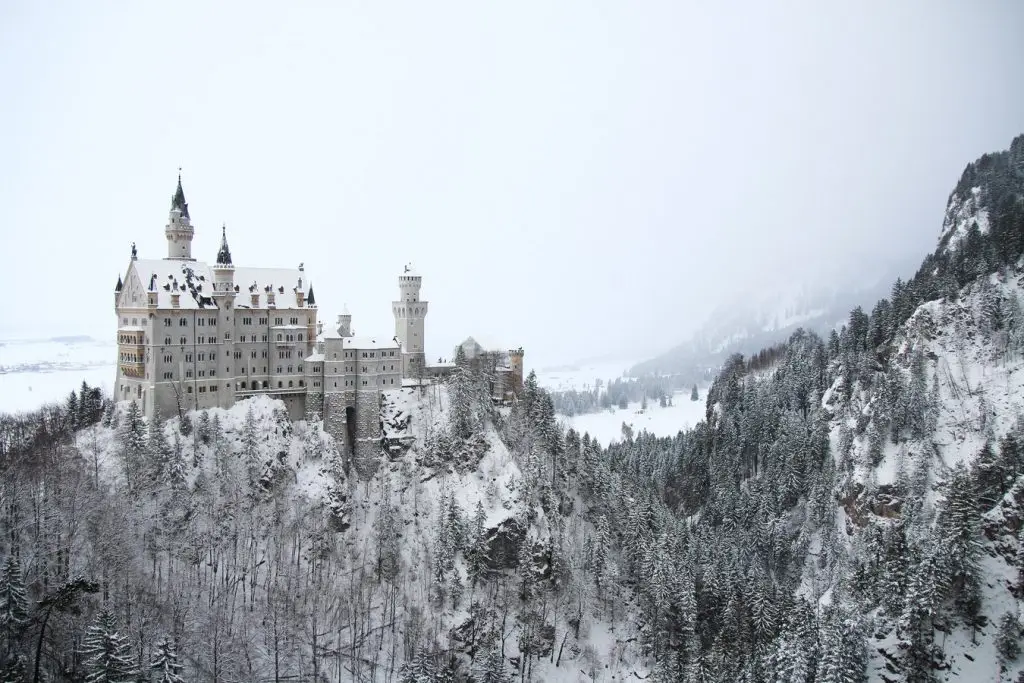
Page Contents
- Aachen Cathedral
- Bastei Bridge
- Berlin TV Tower
- Berlin Wall
- Brandenburg Gate
- Burg Eltz Castle
- Cochem Castle
- Cologne Cathedral
- Dresden Frauenkirche
- Düsseldorf MedienHafen
- Fagus Factory
- Frankfurt Cathedral
- Hamburg Elbphilharmonie
- Heidelberg Castle
- Hohenzollern Castle
- Lake Konstanz
- Linderhof Palace
- Main Tower
- Marienplatz
- Memorial to the Murdered Jews of Europe
- Moritzburg
- Neuschwanstein Castle
- Niederwalddenkmal
- Nuremberg Documentation Center
- Pfalzgrafenstein Castle
- Quedlinburg Castle-Hill
- Reichstag
- Römerberg
- Sanssouci Palace
- Speicherstadt
- Stolzenfels Castle
- The Black Forest
- The Island of Rügen
- Theresienwiese
- Triberg Waterfall
- Wartburg Castle
- Zugspitze
Aachen Cathedral
Aachen Cathedral is one of the most famous architectural and historical landmarks in Germany. The 1,200-year-old wonder of stained glass and stone rises above the charming town of Aachen, making for a beautiful yet imposing sight as you navigate the city.
Known as the Imperial Cathedral, it was part of Holy Roman Emperor Charlemagne’s Aachen Palace complex. Charlemagne loved the Cathedral so much; he declared it would be his final resting place. Since then, Aachen Cathedral has served as the coronation site for dozens of German kings and queens.
Given its historical importance, medieval artifacts, and status as Germany’s first UNESCO World Heritage Site, Aachen Cathedral is a popular tourist destination. Visitors can marvel at the golden octagonal dome ceiling, Charlemagne’s Tomb, two gilded shrines, and elegantly patterned floors inside the building. Sparkling tile mosaics adorn several ceilings and depict scenes and symbols from the Bible.
There’s also a treasury room, where a host of sacred medieval treasures are on display. It’s considered one of the most important ecclesiastical treasuries in northern Europe, drawing a significant number of religious travelers every year.
Despite the Gothic details on the Cathedral’s exterior, the interior looks surprisingly eastern. That’s because the main Palatine Chapel design was based on the Byzantine San Vitale Church of Ravenna, Italy. This unique blend of western and eastern architectural elements makes Aachen Cathedral a memorable must-see in Germany.
Visitors are welcome to explore Aachen Cathedral every day outside of service hours. Guided tours of the Cathedral and treasury room are available for booking at the Dom Information Center across from the treasury entrance.
Explored by Chelsea from The Portable Wife
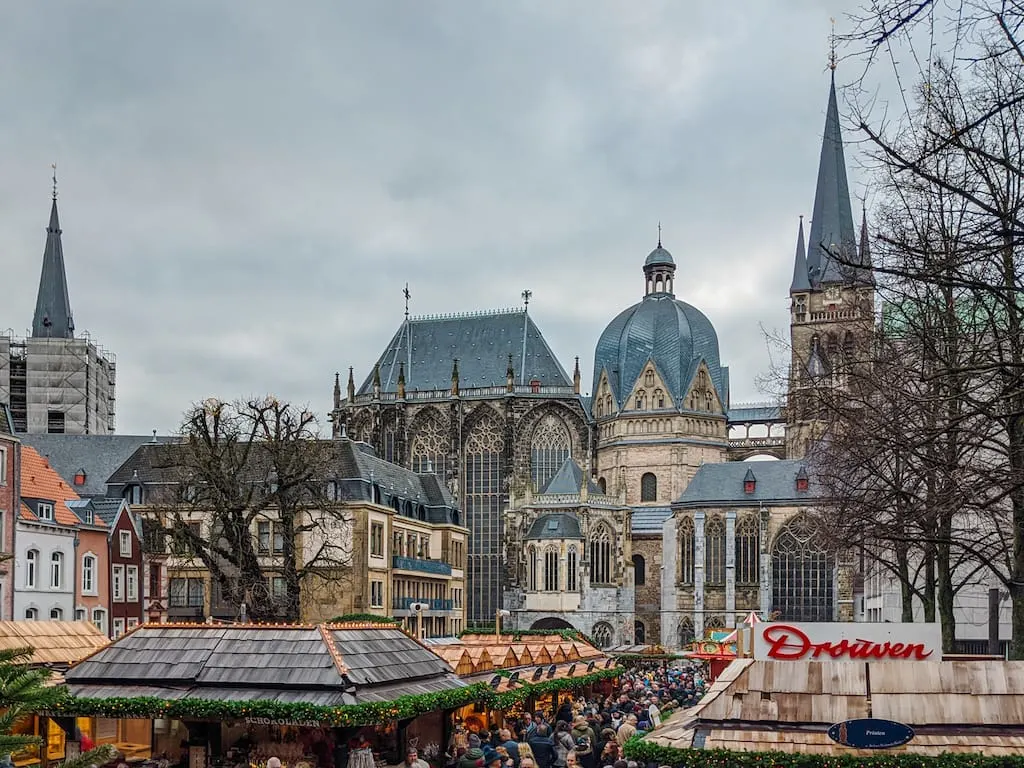
Bastei Bridge
The Basteibrücke (Bastei Bridge) forms the central piece in an impressive rock formation that towers high above the Elbe River in the Saxon Switzerland region, also known as the Elbe Sandstone Mountains.
It’s a massive sandstone bridge (spanning 76.5m) hewn into pillars of rock. This amazing feat of engineering dates back to the mid-1800s and is sometimes described as Germany’s oldest skywalk. Unlike other bridges, this bridge was originally constructed to simply delight tourists and seems to continue to do that to this day.
The views from the bridge are truly panoramic as the Elbe River Valley opens up before you on one side and the Elbe Sandstone Mountains rise on the other. To see the actual bridge from afar, make your way to one of the lookout points.
Since the bridge is only the start of an easy loop walk through rock pillars and pinnacles, don’t miss the rest as the views along the path are simply fantastic!
Saxon Switzerland, including the Basteibrücke, is just south of Dresden. While somewhat accessible by public transport (train, bus, and even boat), it’s best to have your own car as otherwise, you’ll be doing some extra hiking.
The small town of Rathen offers the closest train station or boat stop to the Basteibrücke. However, expect to first complete a pulse-raising 30-minute hike up to the Bastei rocks before you can admire the bridge in all its glory.
If you’re coming by car, park at the Bastei car parks (and not at the one in Rathen) but be aware that the closest car park can fill up quickly. If you manage to get a spot here, your walk to the Basteibrücke will be shortened to a mere ten minutes.
The Bastei is the most popular sight in Saxon Switzerland, so anticipate crowds unless you come very early (before 10 AM and the tour bus arrivals) or late in the day.
Explored by Kati Craythorn from Queensland & Beyond

Berlin TV Tower
The Berlin TV Tower is one of the most iconic sights of this already ridiculously iconic city. Since there aren’t many tall buildings in Berlin, the TV Tower looms in view almost anywhere you go in the city center. Standing at 368 meters (1,207 feet) tall, it is one of the tallest structures in the European Union.
The TV Tower took four years to build and was inaugurated on October 3rd, 1969. It was meant to represent East Germany’s communist strength. Nowadays the tower is the most recognizable element of the skyline and is seen as a symbol of the city and of the reunification of the country. Coincidentally German Unity Day is celebrated on October 3rd. Visiting the TV Tower is a must for any trip to Berlin.
Being so tall means the TV Tower is an excellent place for views of Berlin from above. An elevator takes you up to the viewing platform at about 200 meters, where you can gaze out windows for a 360-degree view of the city. Panels spread around the platform point out different important buildings, landmarks, and parks around the city, so you know what you’re looking at. For a splurge, you can also make reservations at the TV Tower’s revolving restaurant.
There’s never really a bad time to visit the TV Tower, but the views will be better on a clear day. You can buy tickets on site, but it is highly recommended to buy priority tickets ahead of time to reduce the wait time. The TV Tower (Fernsehturm in German) is located just outside the Alexanderplatz station, which you can reach from the U2, U5, U8, and several S-Bahns, trams, and buses.
Explored by Ali Garland for Travel Made Simple
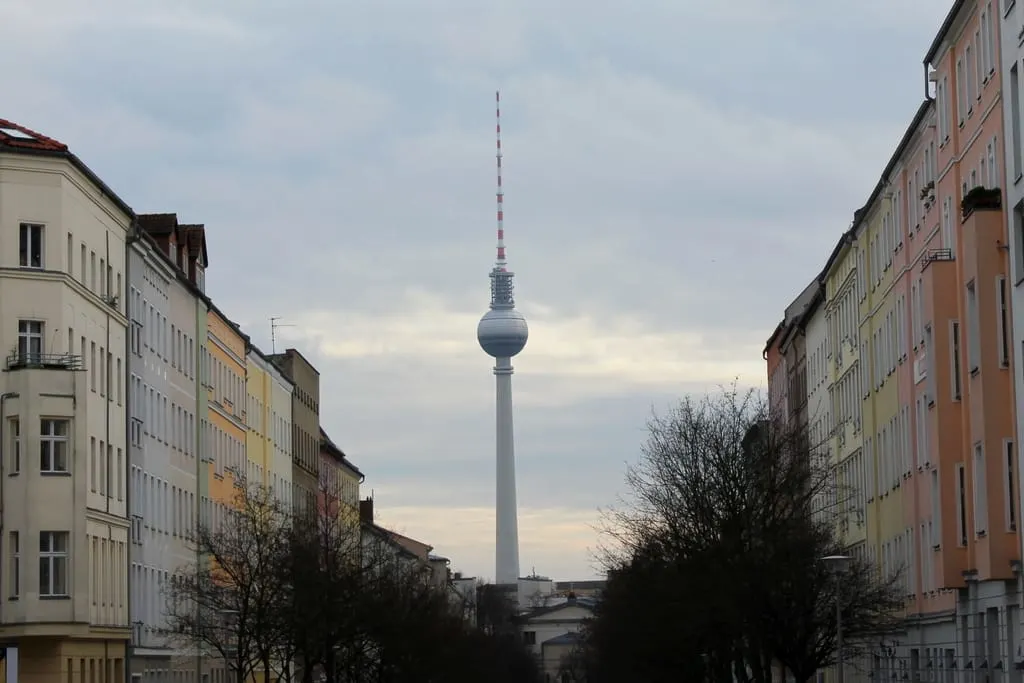
Berlin Wall
The Berlin Wall is one of the capital’s most famous and historic landmarks. Made of concrete, this 27 mile long guarded barrier physically and ideologically divided Berlin from 1961 to 1989, cutting off West Berlin from surrounding East Germany, including East Berlin. Although Berlin had actually been divided since the end of the Second World War, the wall wasn’t constructed until 1961. The reasoning behind the wall was to keep people from fleeing the communist East for the capitalist West.
After nearly 30 years, a series of revolutions in nearby Eastern Bloc countries resulted in ‘the fall of the Berlin wall’ on November 9th, 1989. This was a pivotal event in Germany and one of the most famous scenes in recent history. After weeks of protests and civil unrest, the government announced that the borders were open – crowds of east and west Germans then crossed and climbed onto the wall, tearing it down with sledgehammers and chisels, and celebrating with champagne and music. The official demolition of the wall began on June 13th, 1990, and was completed in November 1991.
Today some remains of the Berlin Wall still exist, and the longest remaining section of the wall (1.3km long) is now known as the East Side Gallery. This huge open-air art gallery in the neighborhood of Friedrichshain was opened on September 28th, 1990, and is painted with multiple murals depicting tales of modern political history. There are artworks from 118 different artists from 21 countries, and the gallery has recently been given protected memorial status.
Explored by Caroline Keyzor from CK Travels

Brandenburg Gate
The Brandenburger Tor is one of the most iconic landmarks in Berlin and an important historical place. In English, it’s also known as The Brandenburg Gate. It’s a neoclassical monument from the 18th century built on an order by Frederick William II, a Prussian king. There used to be a city gate on this site previously, and the Brandenburg gate replaced the former one. Throughout history, some major historical events have taken place here.
It is considered a symbol of peace and unity. This was further strengthened after the Berlin Wall was demolished in 1989. The Brandenburg Gate border officially reopened on December 22nd, the same year as the fall of the wall. Many famous politicians have visited the Brandenburger Gate, and some have also held speeches here, including Bill Clinton and Barack Obama.
The gate is located in the district called Mitte at the junction of Unter den Linden and Ebertstraße in the Berlin city center. It’s very easy to get here by public transportation, and the gate is hard to miss as well, due to its grand size and prominence. One of the most famous icons on the Brandenburg Gate is the Quadriga, which sits atop the main gate.
To make the most of your visit, it’s best to join a guided walking tour of the city or have a professional guide showing you around and explaining more about the different parts of the gate. The guide will also be able to provide more detailed info on the events that have taken place here and tell the story of their importance while standing next to the Brandenburger Tor.
Explored by Alex Waltner from Swedish Nomad
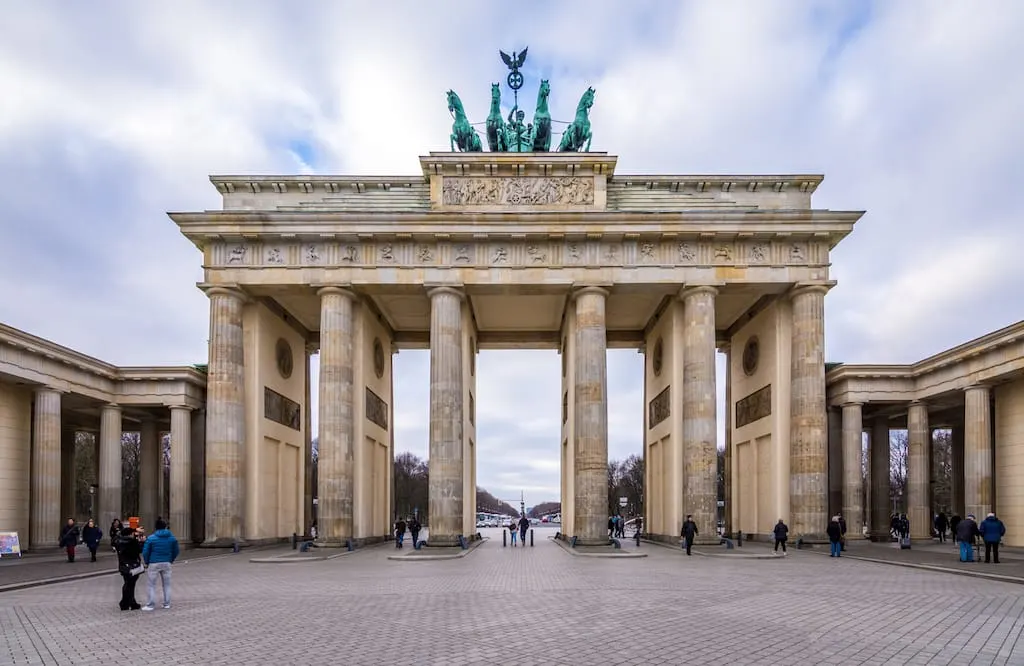
Burg Eltz Castle
Burg Eltz is one of the most amazing castles in Germany with stunning architecture and interesting history. It has been in the same family for over 33 generations, and contrary to other famous German castles, Burg Eltz has never been destroyed due to wars, even though it was built already in the 12th century.
It’s beautifully located in a valley between hills near the Moselle river, between Koblenz and Trier. The type of castle is a Ganerbenburg, which means that it belongs to a community of joint-heirs. Burg Eltz has been divided into several parts for a long time between various branches of the Eltz family. Originally, three branches built and lived here in the castle with three separate complexes of buildings.
Nowadays, Burg Eltz is open to visitors. However, all visits must be accompanied by the castle guide, which is included in the entrance fee. The castle is open daily from 9.30 AM to 5.30 PM, and tickets can be purchased either online or upon arrival. If traveling here during summer, it’s recommended to reserve tickets before your visit to ensure access.
The easiest way to get here is by car, but there are also buses available from Münstermaifeld and Wieschem. There is also a new bus on weekends and public holidays, known as “Burgenbus.” The closest train station is Moselkern Station, from which you can reach daily from Koblenz, Cochem, and Trier. From the train station in Moselkern, it’s about 5 kilometers to walk, which takes approximately 90 minutes. There are also taxis available.
Explored by Christine from Christine Abroad
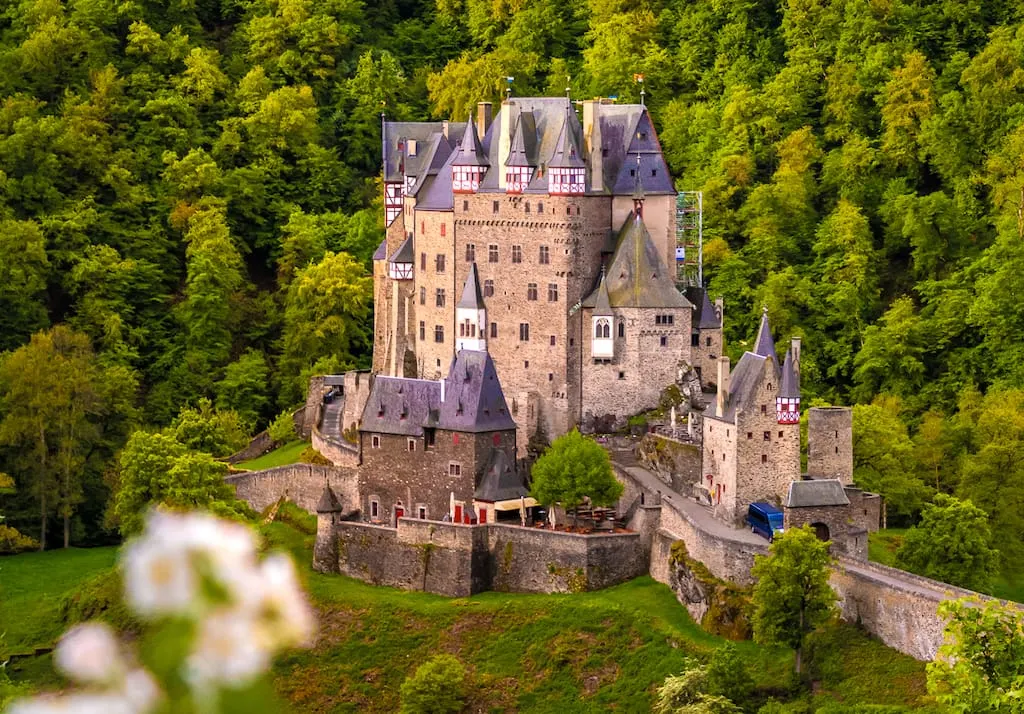
Cochem Castle
The medieval town of Cochem is one of the highlights of Germany’s Mosel River Valley. Steeped in history, charm, and of course, wine – nothing beats a visit to Cochem. One of the best things to do in Cochem is tour Cochem Castle, also known as Reichsburg Cochem. It’s the defining feature of Cochem and one of the best-known landmarks of the entire Mosel Valley and Germany itself.
Wherever you stay in Cochem, the castle towers over you. It’s undoubtedly the dominant feature of the town and its landscape. For over a millennia, it has stood proudly overlooking Cochem from a beautiful hill full of wine-producing grapes. You can even enjoy a glass of local, Mosel Valley wine in the castle’s restaurant. Stick around for a bite to eat and make it your lunch or an early dinner. After hiking to the top of the hill on which Cochem Castle sits, you’ll have an appetite.
While there is a restaurant and tourist exhibition in the castle today, it was largely destroyed by French forces in 1688. The Sun King, Louis XIV, led them, and it’s said that over 40,000 knights defended the castle, which was only a defensive fortress. Restoration efforts began in the late nineteenth century and were funded by a local businessman. Today the castle grounds are open to the public daily, and they boast the best views of the Mosel River valley below.
Besides touring the beautiful architecture, regular events are held in this Mosel Valley landmark like wine tastings, falconry events, and other festivals. You can visit Cochem by river cruise, train or driving from nearby cities like Koblenz or even Cologne.
Explored by Derek and Mike from Robe Trotting
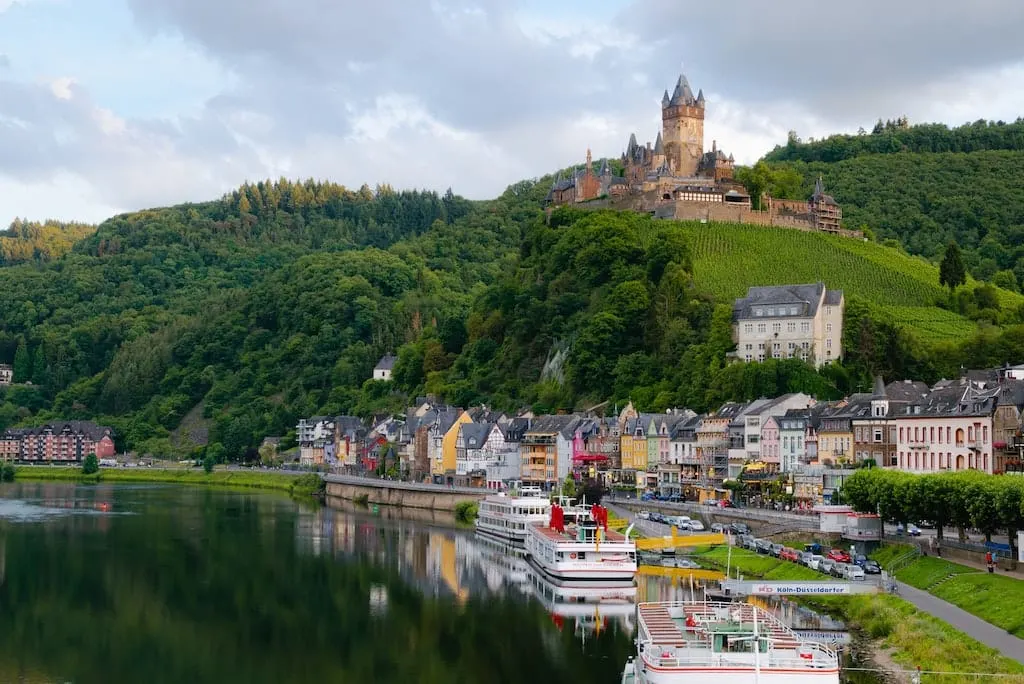
Cologne Cathedral
Situated on River Rhine, Cologne (German: Köln) is a cultural capital of Germany and is enriched with more than 2,000 years of history. Any trip to Cologne is incomplete without vising to the famous and monumental Cologne Cathedral.
It is Germany’s most visited landmark (avg. 20,000 people/day), and at an impressive height of 157 m, it is also the tallest twin-spired church in the world. It is so tall (as compared to houses and buildings in Cologne) that it is visible from almost anywhere in the city center and many other places. As a matter of fact, it was the tallest building in the world from 1880 to 1890.
Although building construction began in 1248 (to celebrate the Assumption of the Virgin Mary), it wasn’t completed until 1880 (yes, it took over 600 years). This delay was primarily due to a lack of funds. During the 2nd world war, Cologne Cathedral suffered damages due to extensive bombings in Germany, but it miraculously survived. Restoration work began in 1950, and in 1996, the Cathedral was added to the UNESCO World Heritage List of culturally important sites.
Reaching Cologne Cathedral is very easy as it is only a few steps from the Cologne train station. The Cathedral can be visited any day (6 AM – 9 PM) throughout the year, but it is particularly interesting the Kölner Karneval (Cologne Carnival) – a festival that takes place every year. The “fifth season” (carnival season) is declared open at 11 minutes past 11 on the 11th day of the 11th month (November 11th, 11:11 AM).
Trivia: Have you ever thought from where does the perfume “Eau de Cologne 4711” get its name? Well, it’s from this beautiful city – where it was invented.
Explored by Sonakshi and Mainak from Places In Pixel
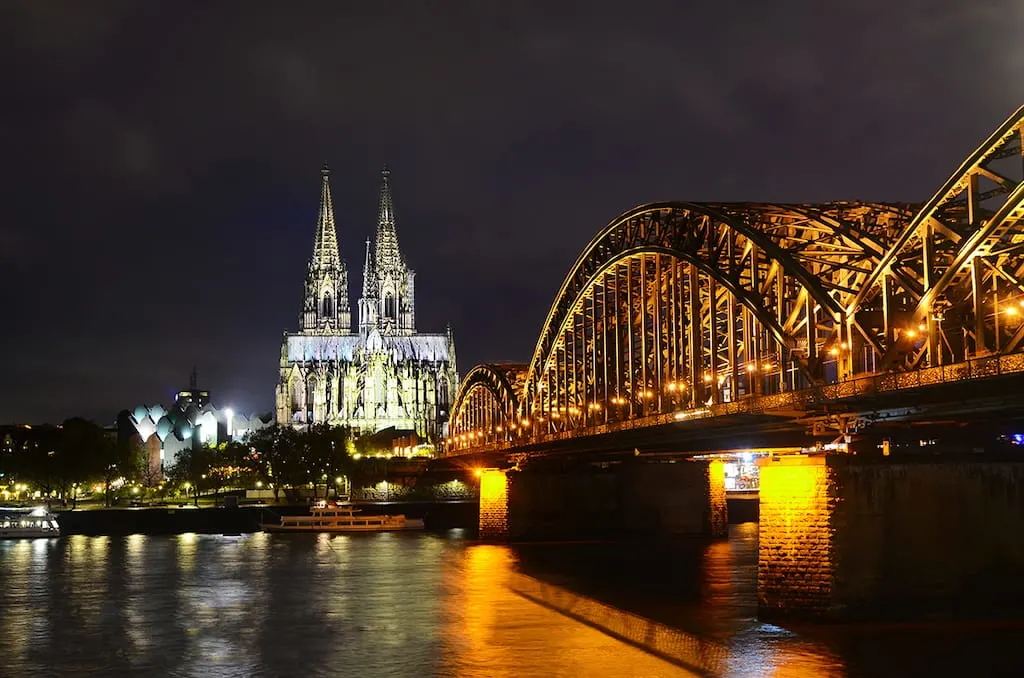
Dresden Frauenkirche
The Frauenkirche in Dresden is one of the city’s most important landmarks and one of its most photographic spots. Standing below the church in Neumarkt Square, it’s hard to believe that you’re looking at a recreation of the original Lutheran Baroque masterpiece rather than the original.
The current building is a reproduction and not the eighteenth-century original because the previous church was destroyed during the Allied bombing raids on Dresden during World War II.
The building stood in ruins for fifty years, from 1945 through 1994. After German reunification in the 1990s, the church was rebuilt along with other important Dresden buildings in the Altstadt. It was completed in 2005, making this important and historic building only fifteen years old! Your eyes will deceive you; however, since the building, and especially the artwork on the interior, looks much older.
You can come on a guided or audio tour or simply visit on your own. Spend at least thirty minutes, exploring the beautiful interior of the church. Nearby you can also visit the Luther Monument and spend time outside enjoying Neumarkt Square before continuing through the other important Dresden landmarks in the Altstadt.
If you want to see some of Dresden’s older, original Baroque buildings, cross the Elbe River to Dresden Neustadt. While technically younger than the Altstadt, it was not the Allied bombings’ focus, so there are original baroque homes and churches here. You can also take in great views of the Frauenkirche in the Dresden skyline from across the river.
Explored by Stephanie Craig from HistoryFangirl
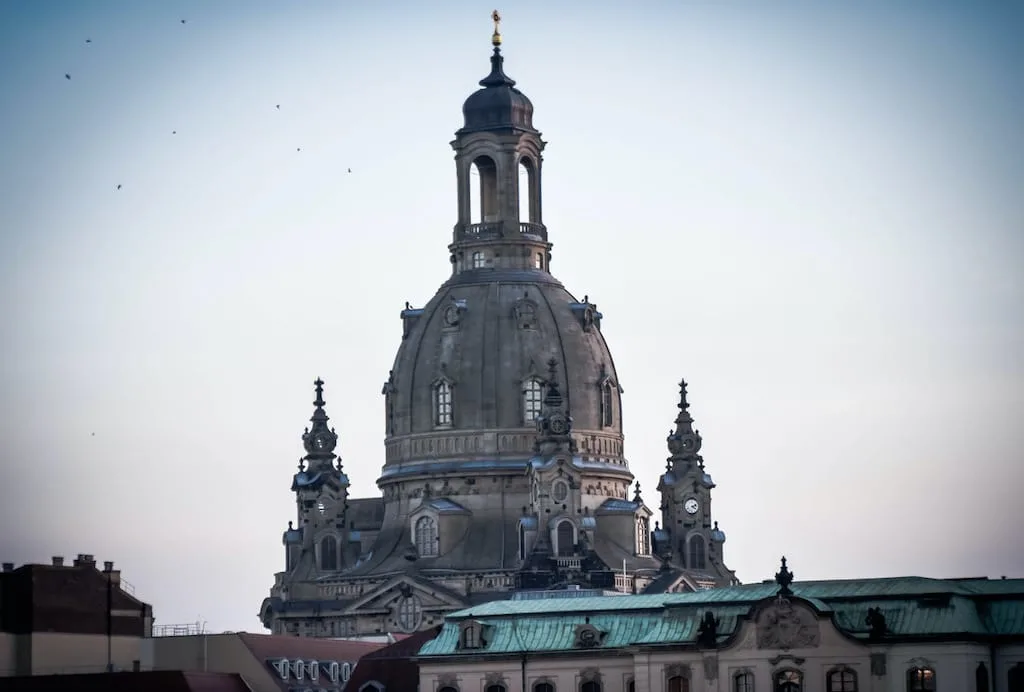
Düsseldorf MedienHafen
An absolute must for lovers of modern architecture, the MedienHafen in Düsseldorf shines with big names and is undoubtedly one of Germany’s most famous landmarks.
This is Düsseldorf’s most revitalized area, a place where high-rise buildings are shooting up faster than you can say Frank Gehry, who just happened to design the shiny landmark ‘Neuer Zollhof’ building here. These triplet high-rises in red brick, white plaster, and stainless steel are in competition with the equally eye-catching Grand Bateau, designed by Claude Vasconi to look like an ocean liner. Across the quay, you’ll see the kaleidoscopic glass Colorium, designed by William Alsop.
If all these architects’ names mean nothing to you, you’ll still find plenty to admire in MedienHafen. Among all these buildings nestle several sky-high bars where you can sip fancy cocktails while looking out over the water. The surrounding media, design, and fashion companies mean you can be sure that everything in MedienHafen is hip and happening!
There is so much to see in this small area. You can just wander around freely at your own leisure – but for those who are curious about the unique compliments of architecture and quirky facts on offer here, you should consider a deep-dive into the area with a MedienHafen tour.
A hidden gem of a city, there are so many things to do in Düsseldorf, besides visiting the MedienHafen. This is where the West German art scene thrived before reunification put Berlin on the artist’s map, and it still has fantastic galleries and an annual showcase for international galleries and artists.
The avant-garde architecture reflected in the Rhine adds to the sense that you’re somewhere really creative — and make Düsseldorf one of the top places to visit in Germany.
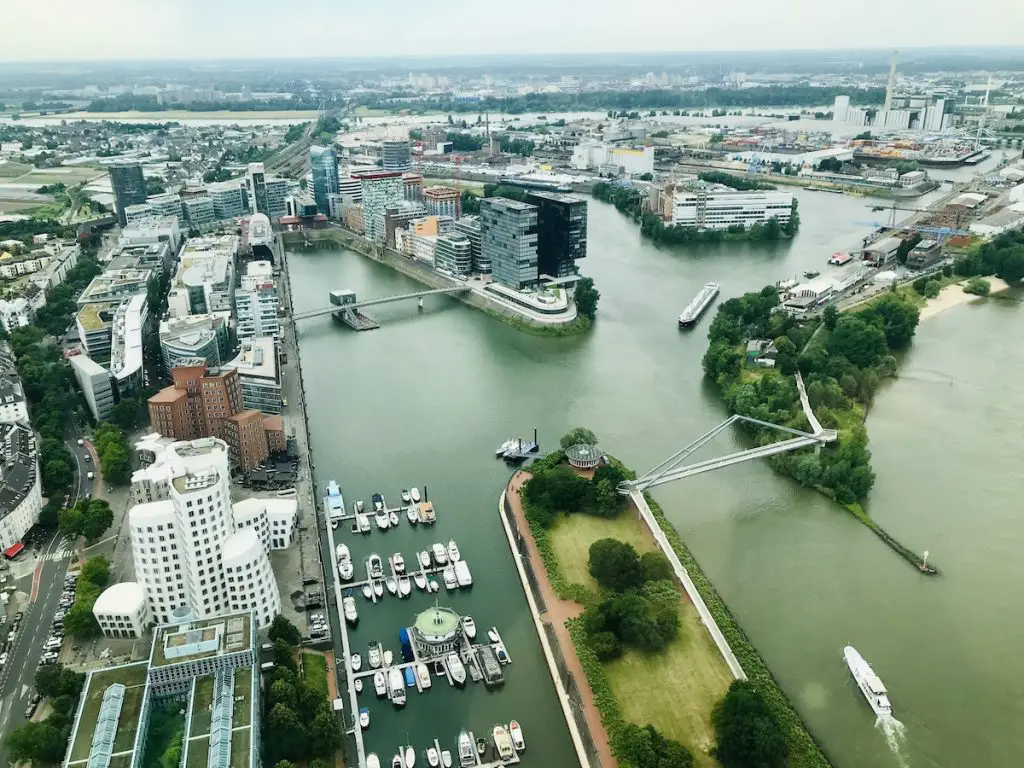
Fagus Factory
Technically not one of the most famous landmarks in Germany (well, unless you are an enthusiastic follower of architecture), but the Fagus Factory in Alfeld, Lower Saxony, is a remarkable example of early modern architecture worth planning a stop off around.
Opened as a shoe last factory in 1910, the Fagus Factory is a 10-building complex which was a landmark development in the evolution of modern architecture and industrial design.
Form follows function here with all stages of manufacture, storage, and dispatch being considered yet groundbreaking design elements, including vast expanses of glass panels and functionalist aesthetics, were still allowed for. A trailblazing work, this was the first major commission of Walter Gropius, one of the founders of Bauhaus.
The Fagus Factory foreshadowed future works from the Bauhaus school and the development of architecture in Europe and North America. As such, it is now protected as one of the rare modern architecture UNESCO World Heritage Sites, like Skogskyrkogården in Stockholm or the Sydney Opera House.
The radical structure was very much a break from the past, and yet its seemingly normal exterior today speaks to just how influential this building has been on design. You’ll need to sign up for a tour to get inside the factory and allow around two hours. Otherwise, you can just stop by the exterior.
The museum onsite concentrates on shoe production and, while insightful (there is a notorious connection with inhumane shoe-testing experiments carried out on prisoners at Sachsenhausen), does not speak much to the importance of the building itself.
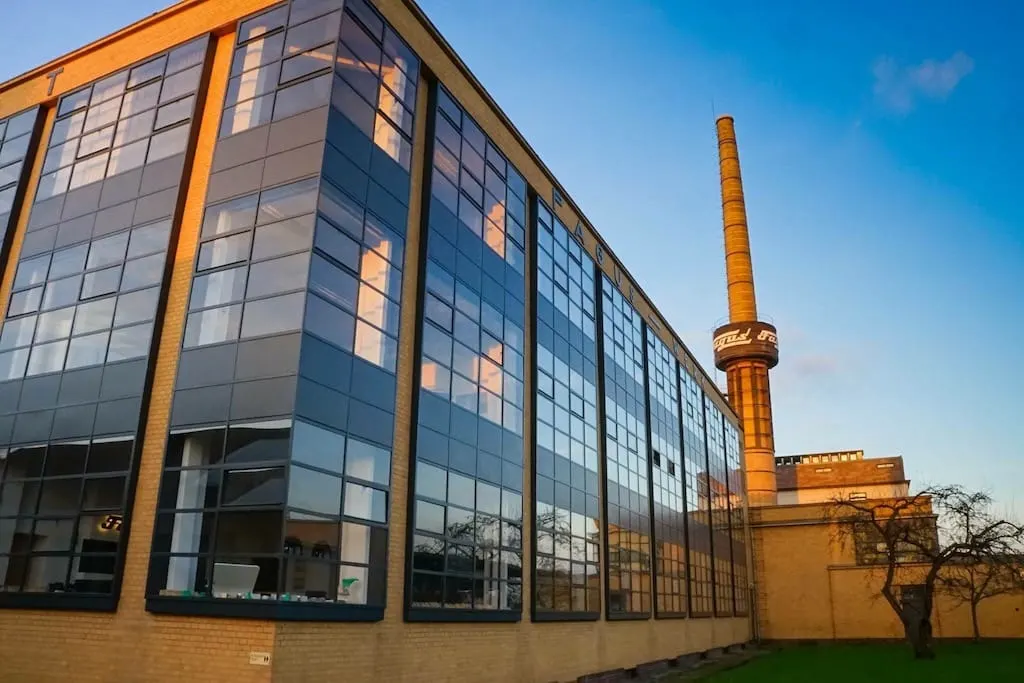
Frankfurt Cathedral
The Frankfurt Cathedral (also known as Frankfurter Dom (German) or Cathedral of Saint Bartholomew) is a large gothic church located in the Old Town of Frankfurt. The Cathedral was named after one of the disciples of Jesus, Bartholomew (also referred to as Nathaniel), who is the patron saint of tanners (leatherwork, glovemakers) and butchers.
The history of the Cathedral is what makes this particular Cathedral a famous German landmark. The ground and foundation of this Cathedral can be traced back to the 7th Century. While this is the third Cathedral to be built on the ground, as the Cathedral burned down in the 1800s, and then the second was bombed by Allied Forces in WWII, there has been a longstanding religious symbol on this spot in Frankfurt.
The length of history for this Cathedral as a large landmark in Frankfurt, led to the location being selected as the crowning location for German Emperors. Those elected would be crowned at the Frankfurt Cathedral, a tradition that occurred for 200 years at this location.
Current day attraction to the Frankfurt Cathedral is the stark contrast of the large Gothic Cathedral compared to the modern-day Frankfurt. The church is easily identifiable from numerous points in the city, as the spire reaches above the surrounding buildings. Like most other European cities, the prime attractions are all co-located in the Old Town. The Frankfurt Cathedral is located in the Frankfurt Old Town and is a five-minute walk from the famous Frankfurt Römer.
After taking in the historic buildings of Old Town, there are two great options for what to do next. One is to simply enjoy one of the numerous cafes located in Old Town, enjoy food and a Frankfurter Spritz. Or visitors can access the nearby Riverwalk at The Main in Frankfurt, which is a popular summertime activity. Located just another five-minute walk away from the Frankfurt Cathedral, travelers can walk along the river and spot the famous Frankfurter Cathedral spire from various points along the Main.
Explored by Amy Dodd from Oceans to Alpines
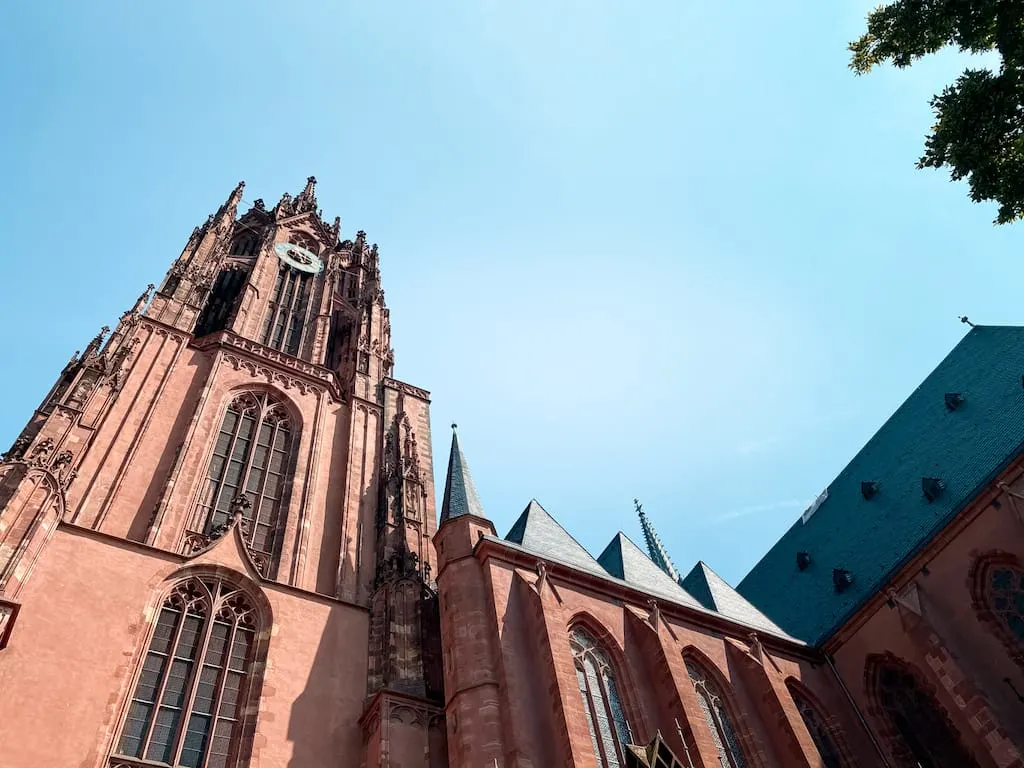
Hamburg Elbphilharmonie
The Elbphilharmonie is located in Hamburg’s HafenCity and built on top of an old port warehouse. The wavy glass front is supposed to mimic the city’s close connection with water. This makes sense since Hamburg is Germany’s most important harbor, and while not a coastal city, it is surrounded by water – the Elb river and the Alster river meander through the city and give it a very maritime feel. Locals like to call it Elfie, a cute nickname for the stunning new concert hall in Hamburg. It is now one of the most photographed buildings in Germany.
The Philharmonic opened its doors in 2017 and is home to 2 concert halls and supposedly has one of the best acoustics in the world. The futuristic design is gorgeous, yet also functional. Over the orchestra floats a huge mushroom-shaped amplifier that is lowered during the concerts and distributes the sound waves evenly throughout the room. Every seat has excellent views over the orchestra and is no more than 30 m from the conductor.
Wrapped around the concert hall in the same building is the Westin Hotel Hamburg, one of the best hotels in the city. The hotel is a bit pricy, but the views over the city and the harbor are definitely worth it.
Even if you are not going to a concert or staying at the Westin, you can still visit the Elbphilharmonie. There are daily tours and events that you can enjoy. Definitely make sure to visit the Plaza – the viewing platform that gives you a stunning view over the city of Hamburg.
Explored by Maria Haase of Europe Up Close

Heidelberg Castle
Located in the university town of Heidelberg, in south-west Germany, Schloss Heidelberg (Schloss is the German word for castle) is actually a palace! Because of the hub of students here as well as being a major tourist attraction, the town of Heidelberg is well connected by train and bus as well as by car. The two biggest cities closest to Heidelberg are Frankfurt and Stuttgart, this region of Germany is filled with fairytale castles.
If you’re driving, there is a very annoying one-way system around the center of the town, and nowhere to park (without insanely inflated prices). As a hint, drive up the hill, and away from the castle, there was ample street parking here, then it’s a downhill walk back to the castle.
Looking at the castle from the opposite side of the riverbank, you’ll get a real sense of how extensive Heidelberg is. Your entrance ticket includes a return trip on the Funicular Railway, which will take you from the town to the castle.
The red castle, nestled into the hillside, was built in the 16th century. Inside you’ll find a mixture of buildings and style ranging from ornately carved facades which you will see on The Ottheinrich Building, to crumbling ruins of the old Powder Tower.
Heidelberg Castle is also home to the world’s largest wine barrel, the Heidelberg Tun! It’s huge, with stairs and a mezzanine leading up to the top of it. You’ll find it housed in The Fassbau Building (German for Barrel Building). The barrel was constructed in 1751 and held a whopping 220,000 liters of wine!
Onsite you’ll find several fascinating museums, one of the notable ones was the Apothecary Museum, which housed lotions, potions, and medical equipment from a bygone era.
Explored by Becki from Meet Me In Departures
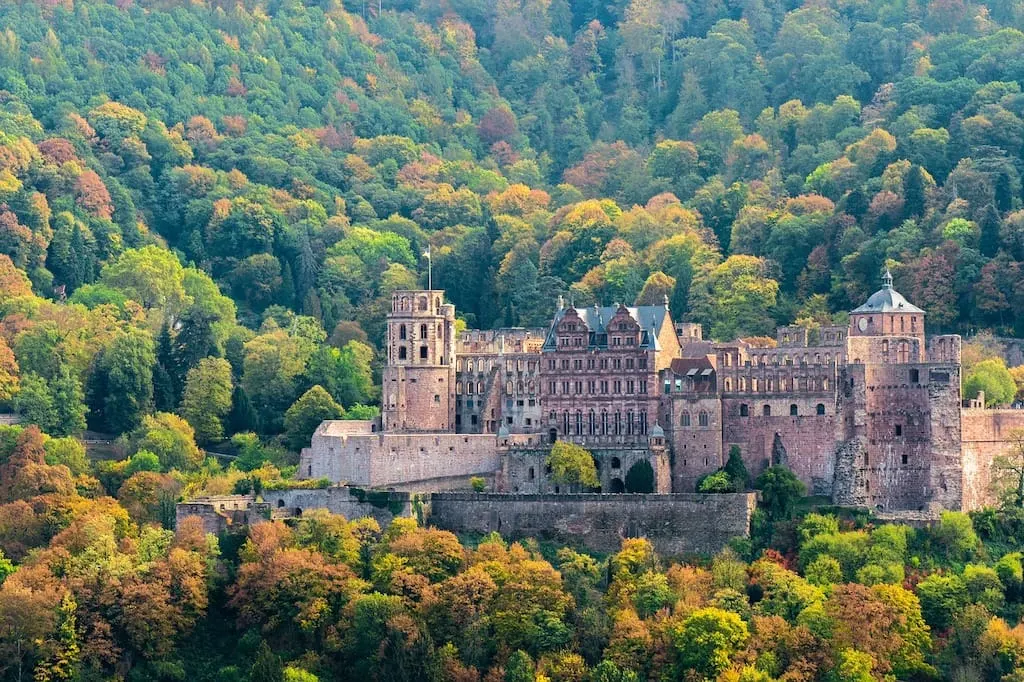
Hohenzollern Castle
Hohenzollern Castle (Burg Hohenzollern in German) is a beautiful fairytale castle located in Baden-Württemburg. This hilltop castle with origins dating back to the 11th century is a popular day trip from Stuttgart and nearby Tübingen.
Fun fact: the Hohenzollern castle open for visitation today is actually the third castle to be built on Hohenzollern hill. After the first and second castles were destroyed between the 11th and early 19th centuries, the current castle was built in the mid-1800s to be a showpiece rather than a primary residence.
Today, the privately-owned (by the Hohenzollern family) castle is home to an extensive art collection and hosts events throughout the year, including a royal Christmas market in December. Movies and TV shows have also been filmed at the castle.
Visiting the castle is easy! If driving, you can park for free in one of the designated lots and either walk the 25-minute path up the hill to the castle entrance gate or take the free shuttle (reserve online when booking your ticket). If arriving by train, take a shuttle from the Hechtigen train station to the castle. Be sure to download the free castle app before you leave — the audio guide will lead you through the exhibition rooms of the castle.
Hohenzollern castle is open daily (except December 24th) from 10:00-18:00 with last entry to the grounds at 16:00 and the showrooms at 17:00 (tip: confirm times before you arrive). Be sure to purchase tickets online before your visit. Tickets are 16 Euros for adults with discounts for children, students, the disabled, and families.
Explored by Cate from My Germany Vacation
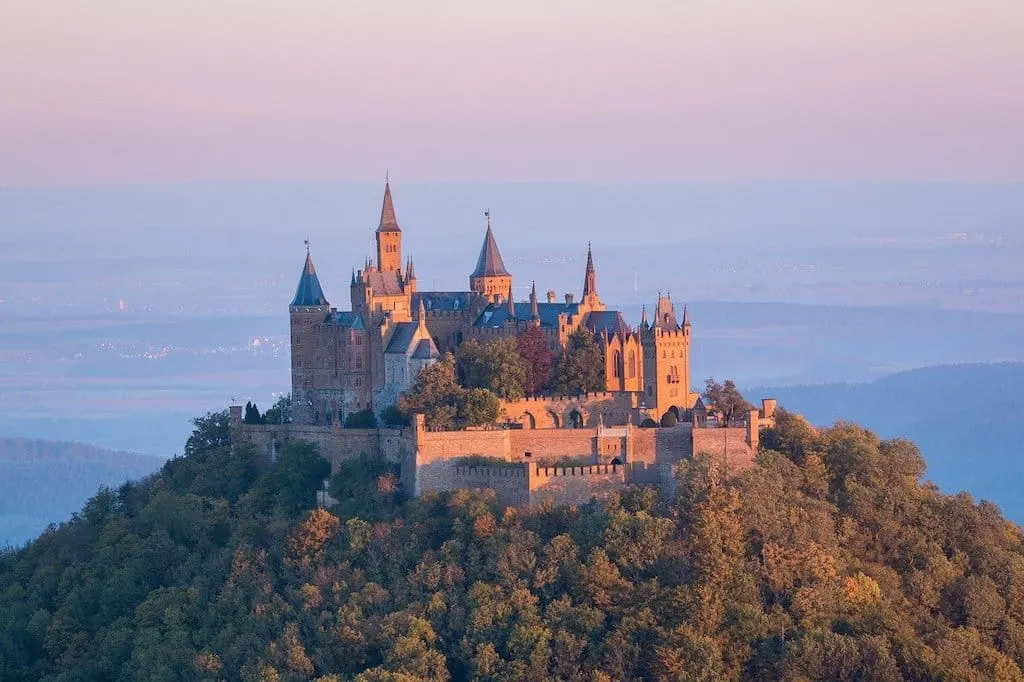
Lake Konstanz
At 63km long and 14km wide, Lake Constance is Central Europe’s third-largest lake, spilling into three countries: Germany, Switzerland, and Austria. It was formed by the Rhine Glacier during the last ice age and is still fed by the rushing Rhine River to this very day.
This stunning alpine lake is actually made up of three parts: Obersee (upper lake), Untersee (lower lake), and a connecting stretch of river, called the Seerhein. Both ends of the lake are quite different from one another, with Untersee just a stone’s throw from the impressive Rhine Falls, and Obersee home to the pretty harbor town of Lindau.
Germany is lucky enough to have more than half of Lake Konstanz’s shoreline within its borders. With sparkling blue waters, pretty pebble beaches, and the northern foot of the Alps nudging onto the horizon, it’s no surprise that Lake Konstanz is one of the most famous natural landmarks in Germany.
Drawing lots of tourists to its shores every year, Lake Konstanz is the perfect destination for a weekend away or a longer summer escape, as there are plenty of scenic resorts and camping grounds peppered around its perimeter.
The lake is a hotspot for water sports: sailing, windsurfing, swimming, and canoeing are popular activities here. The hinterland, on the other hand, is home to scenic vineyards and colorful towns, where castles, baroque churches, town squares, and museums are waiting to be explored.
Not only this but the Bodensee-Radweg cycle path loops around the entire lake, allowing keen cyclists to bike around its perimeter and take in the ever-changing views. All in all, it’s an astonishingly beautiful 260km route – a perfect choice for those looking for somewhere to go cycling in Europe.
Wondering how to get to Lake Konstanz? The closest big city in Germany to Lake Konstanz is Munich. The drive from Munich to Lindau, for example, takes around 2 hours. Alternatively, Intercity Express trains run regularly from Munich Hauptbahnhof and take around 2 hours 30 minutes. You can also access Lake Konstanz by driving from Zurich.
Explored by Lauren from The Planet Edit
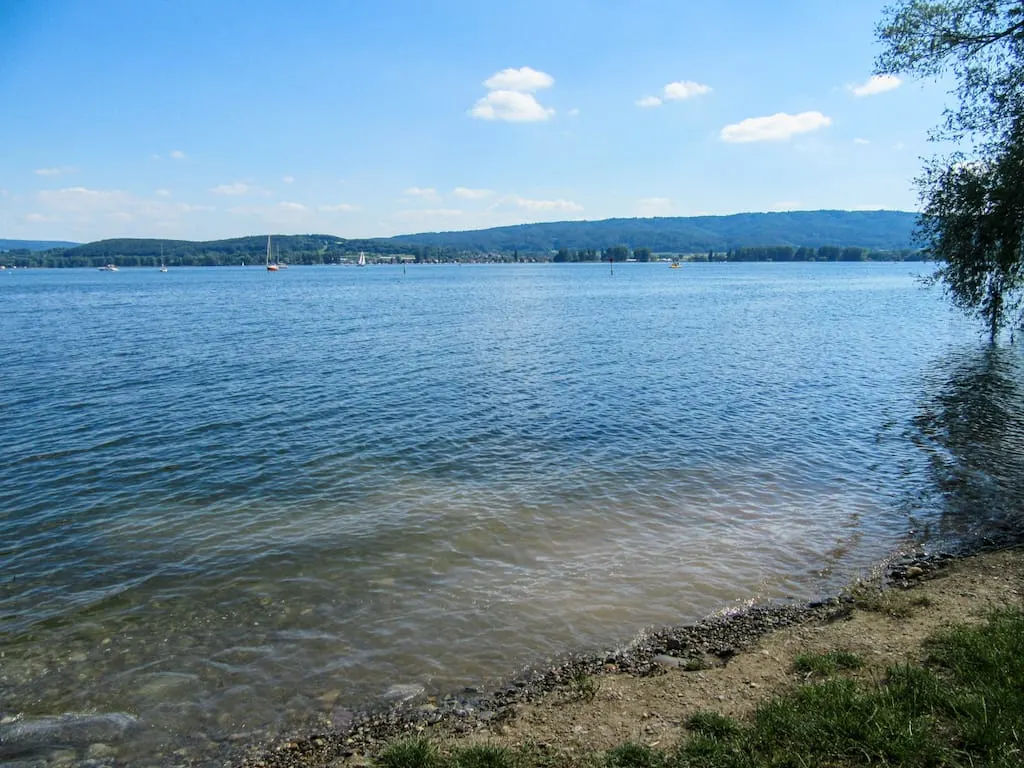
Linderhof Palace
Linderhof Palace is the often-overlooked residence of Mad King Ludwig II of Bavaria. This is where he lived like a French king and created a park landscape like no other in Germany. It’s the only one of his famous residences, including Neuschwanstein and Herrenchiemsee, which he lived to see complete. An unprecedented 8,5 million Goldmark was spent on the construction.
In essence, Linderhof is a mini-Versailles, where Ludwig II lived as a recluse. His bedroom closely resembled that of King Louis XIV in Versailles, complete with paintings of scenes from the French court. The King preferred to dine alone and out of sight of servants. He dreamt up a “wishing table,” inspired by a Brothers Grimm fairytale, that appeared through the floor from the room below. It’s the only one of its kind in the world that’s still in working order.
But it’s the vast gardens and park of Linderhof Palace that make it a must-see attraction. Ludwig II’s flights of fancy are most evident in the Venus Grotto, a replica of the famous Blue Grotto on the Isle of Capri. He also had two structures of the Paris World Fairs, the Moorish Kiosk (1867) and Moroccan House (1873), installed in the Linderhof Park.
Linderhof Palace is near the picturesque town of Oberammergau, where the famous Passion Play is held every ten years. Driving there from Munich takes about 1,5 hours. If you rely on public transport, you can take a train and bus to get there. Exploring the gardens is free, while a ticket includes a guided palace tour and entry to the garden structures.
Explored by Linda from Travel Tyrol

Main Tower
Germany’s financial capital may not appear on too many bucket lists, but it has several worthwhile attractions. One of them is Main Tower, which offers a fantastic bird’s eye view of one of Europe’s most impressive skylines, nicknamed “Mainhattan.” It also offers a great view overlooking Romerberg, the historic center of Frankfurt that was re-built in 1986 after being destroyed in World War II.
Main Tower was completed in 1999 and is located in the Innenstadt district. It is named after the Main River, which cuts through the heart of Frankfurt (You can take a 100 minute Frankfurt River Cruise to enjoy the city from the water). The 56 story tower measures 200 meters (656 feet) tall. The cost to visit the observation deck is just €7.50 ($8.80 USD). Compared to visiting observation decks like the Empire State Building in Manhattan, which costs four times that price, this is a wonderful value.
One of the best times to visit the Frankfurt Main Tower is just before sunset. But if you want to avoid lines, visit right when it opens at 10 AM, preferably on a weekday.
You can also enjoy the wonderful bird’s eye view of Frankfurt over a meal at the Main Tower Restaurant and Lounge. The elegant setting is great for a business lunch or romantic dinner.
Main Tower is just one stop from Frankfurt Hauptbahnhof. From there, take any S-Bahn line from S1 to S9 towards Haptwache. Get off at Taunusanlage, and it is just a 10-minute walk from there – use the GPS on your phone.
Frankfurt Hauptbahnhof (central train station) is the busiest train station in Europe. And Frankfurt Airport is one of the busiest airports in Europe. If you are heading to this modern German metropolis, read this itinerary for how to spend two days in Frankfurt.
Explored by Alex Kallimanis of Wanderlust Marriage Travel
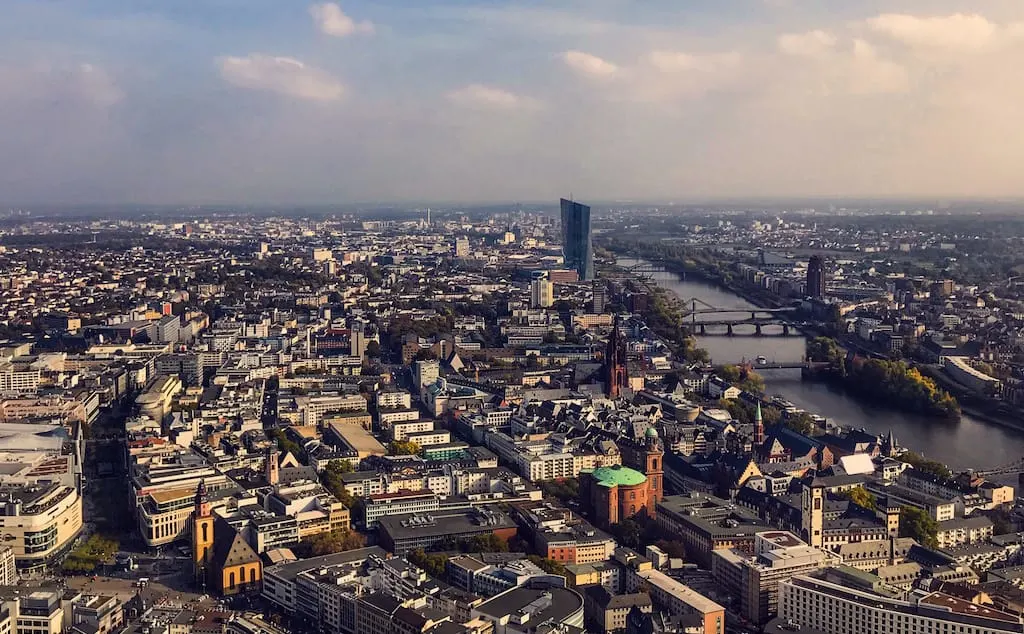
Marienplatz
Marienplatz is the heart of Munich and is the most popular place to visit in the capital of Bavaria among tourists.
Translated as St. Mary’s Square, this landmark is located within a quick distance to other popular attractions in Munich, such as Frauenkirche, Munich Residenz, Asam Kirche, and Munich National Theater.
The square has been the center of the city since the 12 century; however, it got its name in the 17th century after the Marian column was built to celebrate the withdrawal of the Swedish army from the city following the 30 Year’s War.
Today, the main feature of the Marienplatz is the Neues Rathaus (or New Town Hall), Munich’s famous town hall built in a gothic style. What attracts many locals and tourists here is the iconic Glockenspiel in the tower’s balcony that offers a fascinating show. At 11 AM, 12 PM, and 5 PM (from March through October), small figurines from the local folklore come to tell the history of the city through their dance. The spectacle lasts about 15 minutes.
Even if you happen to be in Munich for a short time, this miniature show is an absolute must-see!

